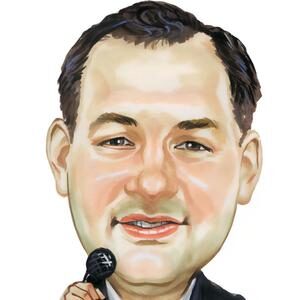Behavioral Finance: Beyond Greed and Fear

Behavioral Finance: Beyond Greed and Fear
“Modern portfolio theory,” a complex mathematical system explaining the workings of the financial markets, has been quite influential on the thinking of investment managers over the last quarter century. The theory derives from the work of a handful of finance professors, several of whom were awarded Nobel Prizes for their efforts. Underlying their equations, and an article of faith to those academics, is the belief in efficient markets— where the price of securities simply reflects all available information about them.
This doctrine ran counter to the long-held idea that emotions—specifically, greed and fear—played a large part in setting market prices. More recently, it’s been suggested that hope, not the pejorative “greed,” was behind the impulse to invest. After all, is it greed that encourages 401(k) participants to place their trust in stock funds in order to secure their retirement?
So, is it hope alone that causes investors to buy stocks that they believe in? And does fear motivate them to diversify, and to sell when the anxiety level is unbearable? Apparently, it’s not that simple.
Beginning in the late 1960s, another group of finance professors began applying emerging findings in psychology to the analysis of investor behavior. They sought to identify the aspects of human nature that led investors to make the same mistakes over and over again. And they explored whether these insights could help explain “irrational” market swings.
Many articles now have been published on the emerging subject of “behavioral finance,” with the result that ever-increasing doubt is descending on the concept of market efficiency. The subject has been admirably tied together in Beyond Greed and Fear (Harvard Business School Press, 2000), by Hersh Shefrin, Professor of Finance at the Leavey School of Business, Santa Clara University.
The book organizes its subject matter around three major themes:
The reliance on rules of thumb to make decisions without complete analysis of the situation (heuristic-driven bias).
Mistaking the form in which problems are presented for their substance (frame dependence).
The effect of behavioral phenomena on market prices (inefficient markets).
Elements of the first two behavioral themes are summarized at the end of this article.
Shefrin points out that the mental and emotional quirks that influence investment decisions are not confined to “naïve” individual investors but affect—to greater consequence—the professionals on whom such investors rely. His roster includes Wall Street strategists and security analysts, portfolio managers, financial planners and investment bankers.
According to the professor’s analysis, decisions clouded by unsuspected biases and misinterpretations of data are responsible for mistakes both trifling and catastrophic. Examples of the latter include the Orange County, California, bankruptcy; the collapse of the gigantic hedge fund Long-Term Capital Management; and hints of the 1999-2000 bubble in profit-free Internet stocks. The book is replete with illustrations of the effect of “human factors” on everything from retirement planning to corporate finance.
The author’s stated purpose is to help investment practitioners understand the motivations that guide their own investment decisions and those of others, thereby avoiding mistakes. There is also the unmistakable implication that by understanding the forces that create inefficiency in the markets, investors can profit, although Shefrin cautions against taking this contrarian approach too far.
Even though the professor’s evidence for the effects of investor psychology is largely anecdotal, he makes a strong case that the behaviors described are not anomalies, as is claimed by defenders of the efficient market theory. Bolstering his case are several other academic studies.
One of the authors of these studies, Terrance Odean at the Graduate School of Management of the University of California, Davis, has analyzed the records of a large discount brokerage firm to uncover behavioral investment patterns. On his own or in collaboration with colleague Brad M. Barber, Odean has found that:
Overconfidence causes investors to trade inappropriately, with the stocks bought underperforming those sold on average. (Do Investors Trade Too Much?, April 1998)
Investors who outperformed the market before trading on the Internet tended to underperform afterward as a result of overconfidence, self-attribution bias, the illusion of knowledge and the illusion of control. (Online Investors: Do the Slow Die First?, September 1999)
Men trade 45% more than women and sacrifice an additional 0.94% of their potential return as a result. Among unmarried individuals, the differences were more pronounced:
67% more trading; 1.44% extra lost return. (Boys Will Be Boys: Gender, Overconfidence, and Common Stock Investment, September 1999)
Loss aversion causes investors to sell winners too soon and hold on to losers too long. (Are Investors Reluctant to Realize Their Losses?, July 1998)
Nor is loss aversion limited to individual investors. A recent study by Patrick Dennis at the University of Virginia and Deon Strickland of Ohio State University (Who Blinks in Volatile Markets, Individuals or Institutions?, February 2000) found institutional investors, particularly mutual funds, more eager to jettison stocks when the market falls sharply.
They attribute this behavior to herd mentality: Managers are much more afraid of landing at the bottom of rankings than they are eager to reach the top.
What can the findings of behavioral finance mean to you as an investor? Quite a lot if they cause you to challenge your assumptions about investing, to recognize the reasons behind market inefficiencies and to avoid the psychological traps that can prevent you from achieving higher returns on your portfolio.
Behavioral themes
Mental and emotional factors identified by Professor Shefrin as leading investors to make mistakes include the following:
Heuristic-driven biases
Availability bias. The tendency to base decisions on the most readily available information.
Representativeness. Projecting from stereotypes. Includes “the illusion of validity.”
Overconfidence. Assuming more knowledge than one actually has. Includes “excessive optimism” and “the illusion of control.”
Anchoring-and-adjustment. Too-conservative extrapolation from current data and too-slow readjustment of expectations based on changes. Includes “hindsight bias.”
Aversion to ambiguity. Preference for the familiar over the unfamiliar.
Self-attribution bias. Ascribing successful outcomes to one’s skill, but blaming failures on bad luck.
Frame dependence
Loss aversion. The fact that losses are more painful than gains are pleasurable leads to reluctance to realize losses, “get-evenitis.”
Concurrent decisions. Focusing on losses rather than netting gains and losses.
Hedonic editing. Preference for frames that obscure losses—e.g., a slim possibility of no loss often outweighs the taking of a sure but small loss.
Regret. Focus on what might have been if not for one’s past mistakes.
Money illusion. Valuing dollar amounts without regard to reduced value from inflation.
Follow GROCO on Facebook
Avishai Ben-Tovim | CEO of MDI Health
Avishai Ben-Tovim is a sales & business development executive with years of professional experience and a drive to succeed and to innovate. He holds an IT Engineering degree from Ben-Gurion University of the Negev as well as an MBA from Tel Aviv University. Over the course of his career, he has worked extensively within the sales and technology sectors and held a variety of technical and management roles with companies like Kenshoo, eToro, Google and Roundforest, the latter of which he acted as
How Ellipsis Health Will Change Behavioral Health Diagnosis | Steven Cupps
AlanI’m visiting here today with Steven Cupps, he is the head of Business Development for Ellipsis Health. Welcome to today’s show.Steven Thank you so much for having me.AlanSo Steven, I’d like to hear the background of how you got to the position that you’re in today. What led up to this?StevenBehavioral health has always been a passion of mine. If you think about the entire ecosystem, and in healthcare, it’s really the biggest unmet challenge today. And so what we’re doing at ellipsis is we’re
California LLC Laws And IRS Identity Theft Reporting
A discussion on the tax history of LLC entities i…
Armin Tahmasbi | Encapsulate
I’m a young entrepreneur and a Ph.D. candidate in Biomedical Engineering program at the University of Connecticut, working on “Drug Delivery Systems, Self-Assembled Nanoparticles & Microfluidic Devices”, in Storrs, CT, US. I’m working in Self-Assembled Functional Nanomaterials Laboratory, under the supervision of Prof. Mu-Ping Nieh on “Drug Delivery Systems for cancer therapy”. We’re developing a universal platform for encapsulating and smart delivery of a wide range of drug molecules and




